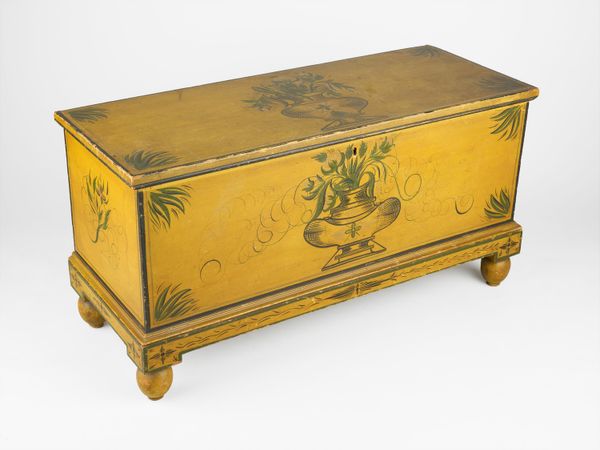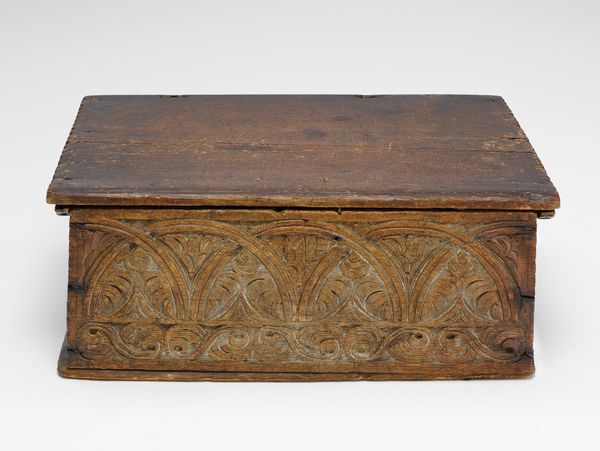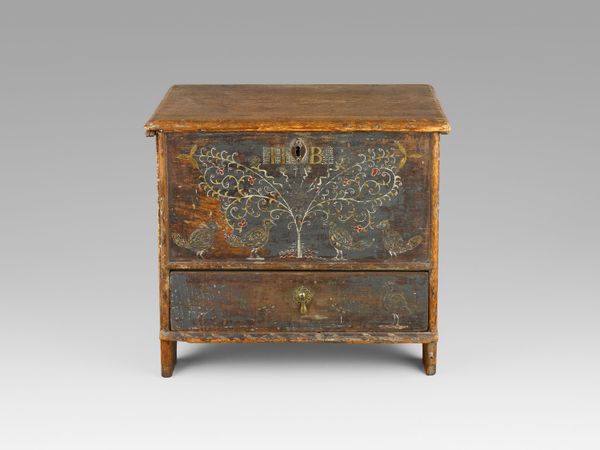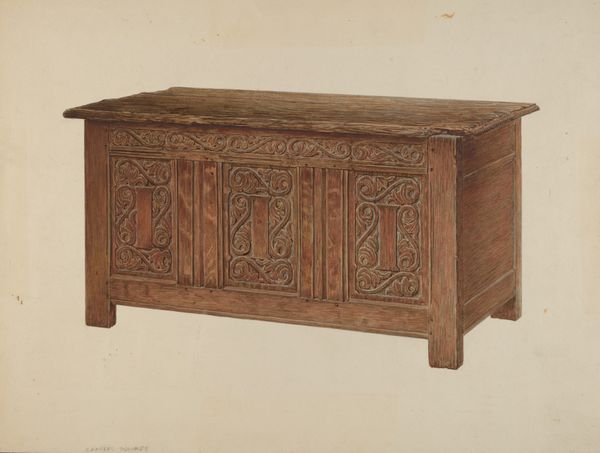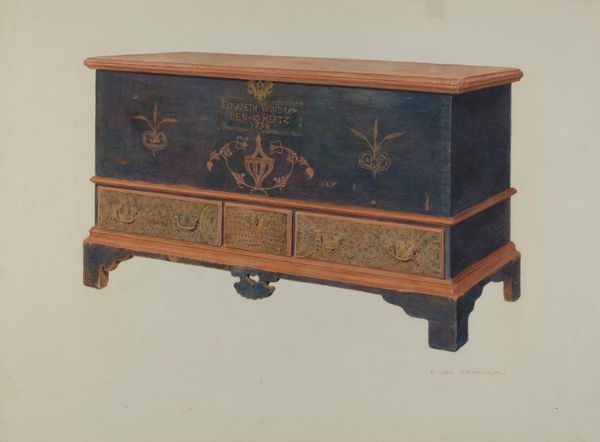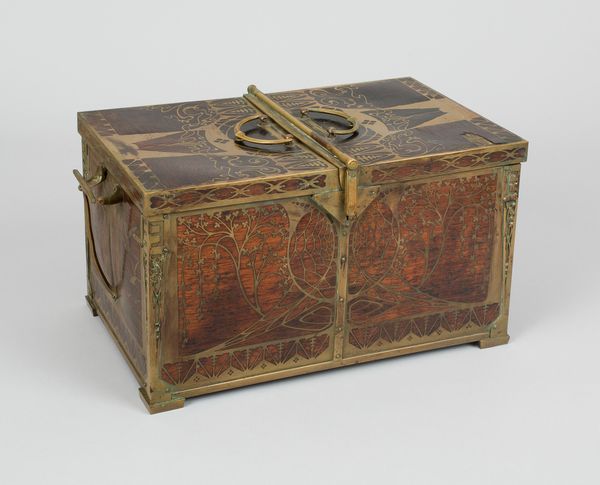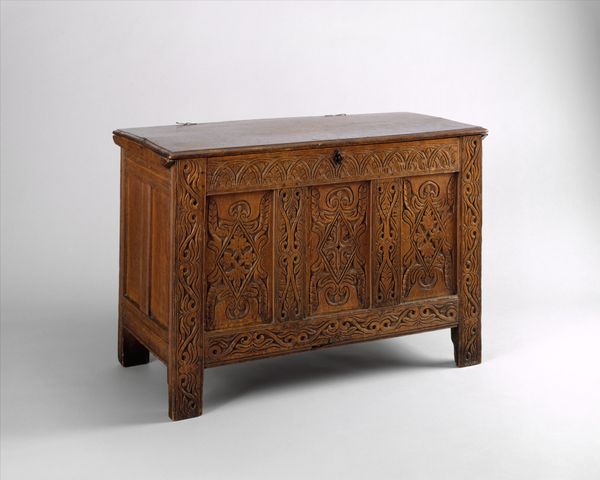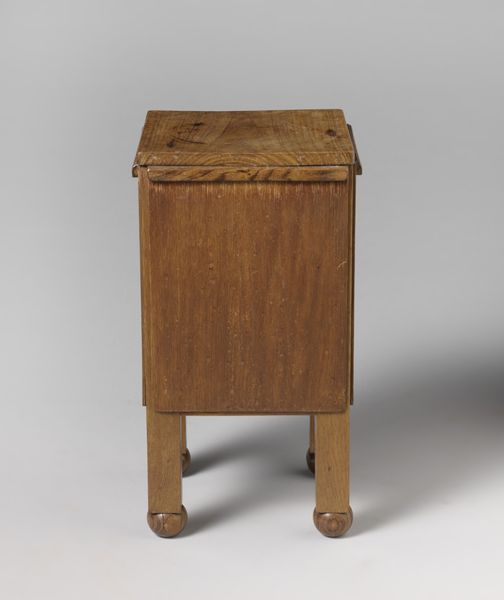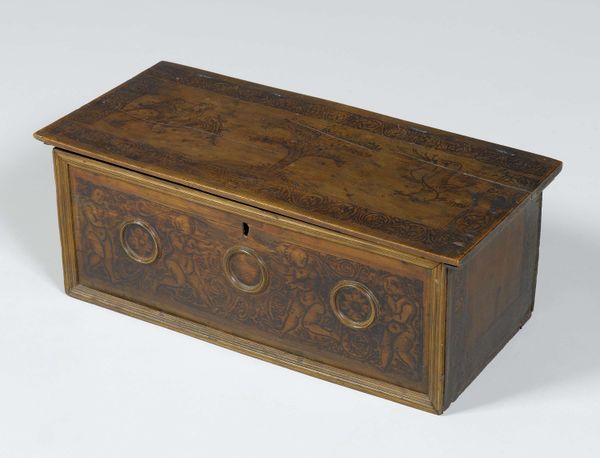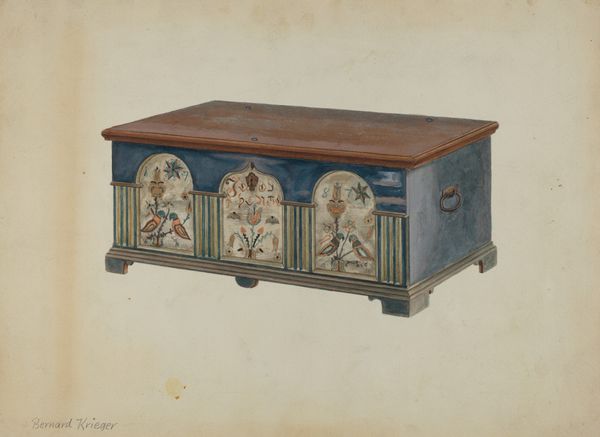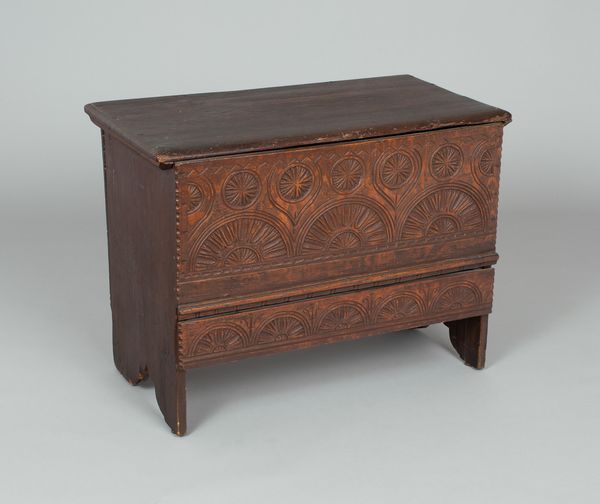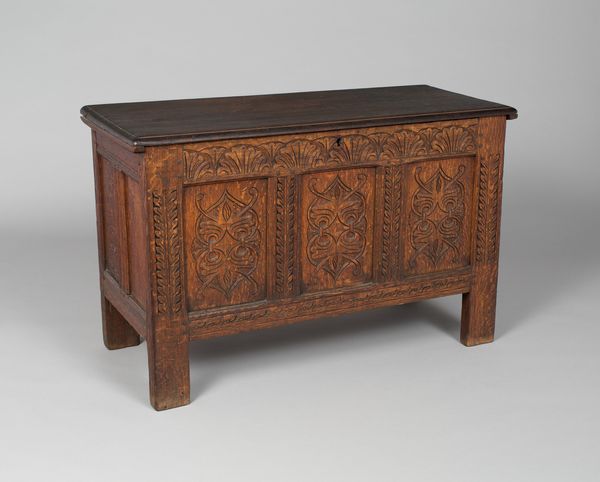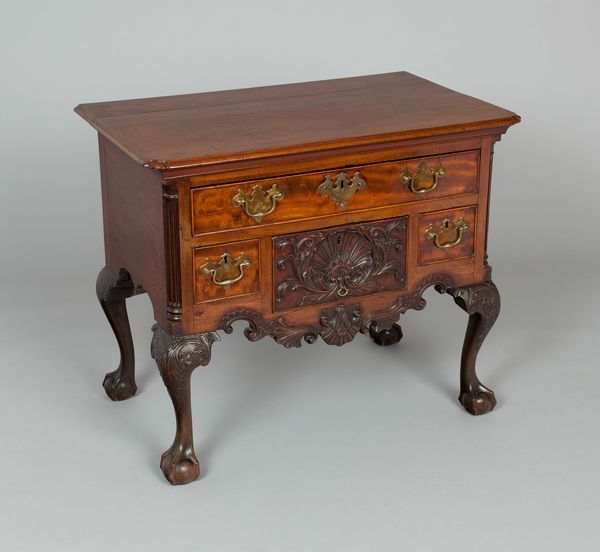
tempera, painting, wood
#
folk-art
#
tempera
#
painting
#
furniture
#
folk-art
#
romanticism
#
wood
#
genre-painting
#
decorative-art
Dimensions: 54 × 124.4 × 46.6 cm (21 1/4 × 49 × 18 3/8 in.)
Copyright: Public Domain
Curator: Here we have a chest, likely created between 1805 and 1820 by an anonymous artist. It is constructed from wood and adorned with tempera paint, currently residing here at The Art Institute of Chicago. Editor: Well, my initial reaction is that this has a somber yet decorative mood. The muted colors lend an aged feel, while the design attempts, and succeeds partially, to invoke formality, even elegance. Curator: Indeed. The muted palette reflects the materials and artistic conventions of the era. You can sense a deep connection to folk traditions through the decorative choices and the implicit personal touch. Floral motifs symbolize growth, and life. And given its function, a chest is all about the storing, holding of a family's narrative over time. Editor: The overall design lacks complete symmetry; look how the flower ornaments almost touch on the right-hand side while floating in a much larger empty space on the left. Also, notice the slightly irregular painting of the flowers, and their internal forms: there is a very slight disruption between intention, design, and rendering. Curator: Those "imperfections" are precisely where its charm lies. We are perceiving not just a piece of furniture but the embodiment of human endeavor. What do you think of the "CN" displayed below? It grounds it further. The owner made it part of their life story. Editor: Good catch, and yet if you consider the texture of the wood, you can sense time, the wood expanding and contracting, while retaining and disrupting that tempera layering. The geometry, of the flowers against the lines surrounding, it makes a statement that it's simultaneously there but also a product of slow dissipation. The diagonal hatching is the most overt pattern on the piece. Curator: That geometrical form—hatching—suggests, to me, ideas of community and belonging, stitched into the very structure of domestic life. This isn't simply about storage, it is about memory. Editor: Yes, and formally, what impresses me most is that geometric design versus the round, and semi-chaotic shapes of those flower designs. That juxtaposition offers some subtle interest. Curator: Absolutely. We begin to appreciate the rich layers of history embedded within its surfaces. Thank you. Editor: Thanks, yes it allows a space between memory, its attempt to materialize itself, but its disruption.
Comments
No comments
Be the first to comment and join the conversation on the ultimate creative platform.
